ISSN 2348-1196 (print)
International Journal of Computer Science and Information Technology Research ISSN 2348-120X (online) Vol. 10, Issue 2, pp: (59-64), Month: April - June 2022, Available at: www.researchpublish.com

ISSN 2348-1196 (print)
International Journal of Computer Science and Information Technology Research ISSN 2348-120X (online) Vol. 10, Issue 2, pp: (59-64), Month: April - June 2022, Available at: www.researchpublish.com
Adegbola Taofiq Adeola1 , Abiodun Abdulrazaq Ipaye2 , Abdulwahab Isiaka3 ,
Abosede Samson Adebowala4, Joda Shade5, Ifemide Aibimuomo6 , Olatunji Omoniyi7
1,2,3,4,5,6Department of Computer Science, Federal College of Agriculture Akure
DOI: https://doi.org/10.5281/zenodo.6552798
Published Date: 16-May-2022
Abstract: InternetofThings(IoT)technologyisexpectedtoplayabasicportioninmovingforwardagrariancapacityto meet food request. Smart agriculture incorporates IoT based modern technologies to improve operational efficiency, maximizeyield,andreducewastagethroughdeploymentofcontrolmechanism.The majoraimbehindthisprojectisto design and build an automated greenhouse for Federal College of agriculture, Akure using Internet of things (IOT) devices that can maintain the natural conditions, by acting upon live sensor readings. Raspberry Pi will be used as a controller to receives input from a different sensors and it control motor, light and other actuators.
Keywords: Internet of Things (IoT), real-time, Raspberry Pi, Smart agriculture.
Federal College of Agriculture Akure, founded in 1957 is one of the leading institutions in Nigeria that trains middle-level manpowerintheareaofagriculture.TheInstitutions missionistohelpthenationreduceits unemploymentrate,increasefood security, and equip its students with the skills required to be self-reliant through agriculture. The College is a research institution made up of four sub-sectors: Crop Production, Livestock, Forestry and Fishing.
Crop production is the branch of agriculture that deals with the production of crops for food and fiber (byjus 2022). The institution grows different varieties of plants. Some of these crops cannot grow well if the climatic condition is not control because of there fragile nature while some do not need human intervention or any special climate or temperature to grow. Differentclimaticconditionsareneeded foradifferenttypeofcrops,itimpliesthatcertaincropscanonlycrowinaparticular season. To address the difficultyof producing crops only during a specific season, an environment can be established where high-value crops that require a lot of attention can be produced in an automated green house with little human participation. The temperature and other climatic conditions inside the greenhouse may be maintained by themselves because the green house is automated, hence manpower is not necessary.
A greenhouse is a structure or a building with transparent walls and roofing material, such as Polyethylene plastic, in which plants that require climate control are grown (Smitha et al., 2016). Inside the greenhouse, unusual environmental conditions suchashightemperaturesandexcessive humiditymightharmtheplants.Asaresult,environmentalregulationisrequired.The primarygoalofthisprojectistodevelopandconstructanautomatedgreenhouseusinganInternetofThings(IOT)controller thatcanmaintainenvironmentalparametersbyactingonreal-timesensorinputs.TheRaspberryPiwilloperateasacontroller, receiving data from a variety of sensors and controlling motors, lights, and other actuators.
IoT refers to the interconnectionofphysical items that are equipped withelectrical circuits, sensors, software, and a network connection that allows them to share data.
Theproject'sspecificgoalsaretoproposeagreenhouseautomationsystembasedontheInternetofThings(IOT).Thedevice will be able to regulate the soil's humidity, temperature, and moisture.
Prototype of an automated greenhouse was implemented in the work of Shankaraiah et al., (2019), in which the control the parameters like humidity, temperature, and soil moisture, using sensors like DTH 11, LM 35, and also take pictures of the plant at specific times and send them to mail, so that if a person wants to ascertain the status of the plant to know if it is
ISSN 2348-1196 (print)
International Journal of Computer Science and Information Technology Research ISSN 2348-120X (online) Vol. 10, Issue 2, pp: (59-64), Month: April - June 2022, Available at: www.researchpublish.com
infected or healthy. The project also uses feedback control, which means it monitors the green house by calibrating precise results and adjusts the settings as needed.
Shelvane et al. (2019) developed a Raspberry-pi-based real-time remote control greenhouse monitoring system that allows users to track environmental parameters remotely. The project's major goal is to create a simple, low-cost system that continuously updates and controls the value of environmental parameters in order to ensure optimal plant growth. The key sensors utilized in the research are the DHT11, soil moisture sensor, and LDR sensor, which provide precise values for temperature, humidity, soil water content, and light intensity. The Raspberry-pi motherboard is connected to all of the resources, including the cooling fan, artificial light, and motor pump. The project was split into two sections, with the first involving programming the Raspberry Pi with the Python programming language.
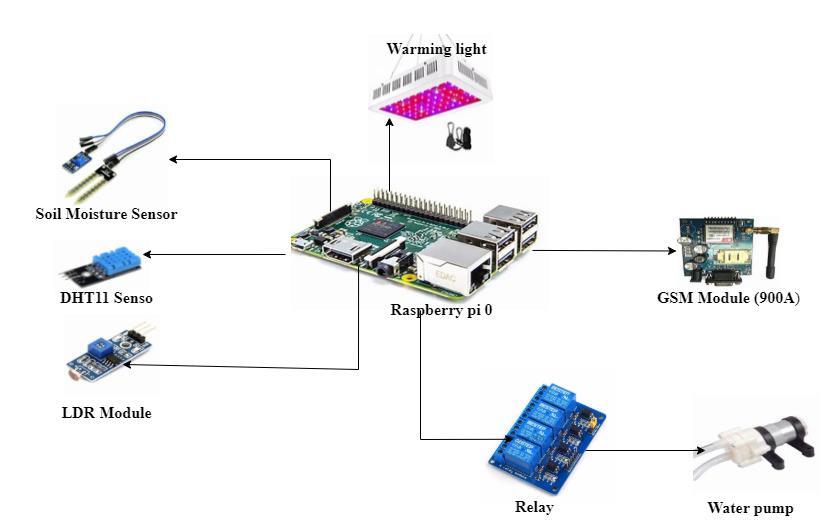
In their paper IoT based Smart Farm, Gondchawar et al. (2016) attempt to construct a smart and automated agriculture utilizing internet of things technology. The technology was created using a GPS-based remote controlled robot. Spraying, weeding, moisture sensing, bird and animal scaring, security, and other tasks are among the system's responsibilities. Smart irrigation withsmart control and intelligent decision makingbased onreliable real-time field data are also part ofthe project. Finally, the warehouse was designed to contain the following features: temperature control, humidity control, and theft detection. Controlling of all these activities was done by remote smart device or computer connected to Internet and the operations was achieved by interfacing sensors, Wi-Fi, camera and actuators with micro-controller and raspberry pi.
The Raspberry Pi is a low-cost, compact computer that connects to a computer monitor or television and operates with a regular keyboard and mouse. It is a small board that allows users to experiment with computing and learn to program in languages such as Scratch and Python. The Raspberry Pi has been updated to include a camera connection for the Pi Zero, whichcanonlybeused withaRaspberryPiZeroCameraCable.OnlyaregularRaspberryPiCameracableiscompatiblewith this board.
A Broadcom BCM2835 application processor
1GHz ARM11 core which is40% faster than Raspberry Pi 1
512MB of LPDDR2 SDRAM
A micro-SD card slot
Micro-USB sockets for data and power
ISSN 2348-1196 (print)
International Journal of Computer Science and Information Technology Research ISSN 2348-120X (online) Vol. 10, Issue 2, pp: (59-64), Month: April - June 2022, Available at: www.researchpublish.com
An unpopulated 40-pin GPIO header
Identical pin out to Model A+/B+/2
An unpopulated composite video header
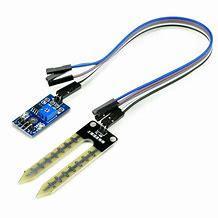

Soil pH refers to the current pH ofthe soil, whichplays a vital role inplant growth. Everyplant has itsownpH that is best for its growth, however it can thrive in a wide range. Controlling the pH of the soil is therefore critical for crop growth.
Adevicethat measuresthecurrentpHofthesoilis knownas asoilpHsensor.Twostainless steelprobesofthesensorare put verticallyintothe soiltodeterminethepHvalue.The pHofsoilcanbeclassifiedasacidic,alkaline,orneutral.ThepHofthe soilisalsoanessentialcomponentindeterminingsoilfertility. Apartfromsweetpotatoesand blueberries,soilpHdetermines the abundance of microorganisms and nutritional availability.
The Soil Dampness Senso is a device for determiningthe volumetric water content ofsoil and other plasmatic materials. The two exposed pads form the sensor's test. As the amount of water in the soil accumulates, superior conductivity between the padsisobserved.Toinvestigatethesensor's usable yield,this pad isattached toamodule, whichisthenconnectedtoanADC (MCP3208 12bit 8channel) chip.
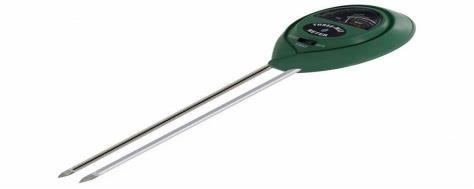
The DHT11 Senso relatively inexpensive sensor that measures soil temperature and humidity. The air is measured using a capacitive humidity sensor and thermistors. The Raspberry Pi receives the digital signal.
ISSN 2348-1196 (print)
International Journal of Computer Science and Information Technology Research ISSN 2348-120X (online) Vol. 10, Issue 2, pp: (59-64), Month: April - June 2022, Available at: www.researchpublish.com
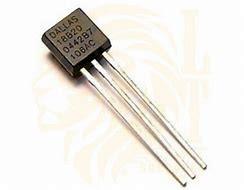
TheDS18B20isatemperaturesensorthatprovides9-bitto12-bittemperaturedata.Thesenumbersrepresentthetemperature of a certain device. This sensor can connect with an internal chip using a one-wire transport convention, which employs one information line. Furthermore, this sensor obtains the control supply directly from the information line, eliminating the requirement for an external control supply. Mechanical frameworks, consumer goods, thermally sensitive frameworks, thermostatic controls, and thermometers are among the uses for the DS18B20 temperature sensor
A GSM/GPRS Module is an IC or chip that uses a Subscriber Identity Module and Radio Waves to connect to GSM communication.850MHz,900MHz,1800MHz,and1900MHzarethemostpopularradiofrequenciesusedbyGSMModules. For the interface and to send SMS to the farmer as designed, we link it to the Raspberry Pi.
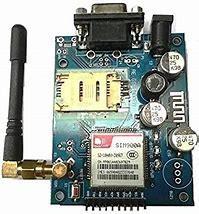
intensity of light can be determined using LDR sensor module. it is digital sensor as well as analog sensor module that can alsoberefertoasPhotoresistorsensor.ThissensorhasanonboardLightDependent Resistor,thathelpsittodetectlight. The yield of the module goes high in the absence of light and it gets to be low in the presence of light. The affectability of the sensor can be balanced utilizing the onboard potentiometer.
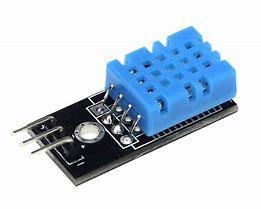
ISSN 2348-1196 (print)
International Journal of Computer Science and Information Technology Research ISSN 2348-120X (online) Vol. 10, Issue 2, pp: (59-64), Month: April - June 2022, Available at: www.researchpublish.com
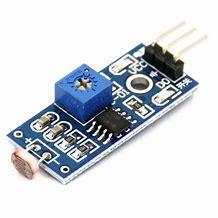
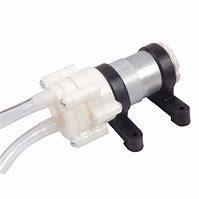
Thewaterpumpcanbecharacterized asapump whichemploymentstheprincipleslike mechanicalas wellaspressuredriven allthroughachannelsystemandtocreateadequatedriveforitsfutureuse. Whenthesoilbecomesdry,awaterpumpislinked to the Raspberry Pi through a relay to give it with the water it demands.
Thislight maybeturned onautomaticallybythe systemtohelpthecropdevelopquickerandmoreeffectively. Thesystemis completely automated, but the agriculturist can manage it physically via the app.

Agreenhouseisastructure withhightechnologyequipmentorfacilitiesthatcancontrolthetemperatureoftheenvironment.It isgoodforlantsthatrequirespecificclimaticconditiontogrowhealthy. Thespecificobjectivesofthisprojectaretoproposed a greenhouse automation using Internet of Things (IOT). The system will be able to control the humidity, temperature and moisture of the soil.
I amindeed grateful to God Almighty for giving us the wisdom to write this paper. I am thankful to all staffs and lecturers of computersciencedepartment FederalCollegeofAgriculture Akure,OndoStateNigeria(FECA).Mysincereappreciatealso goes to all the past and present Head of department of Computer science FECA Mr. O.O. Oyeneye, Dr. V.O Onibon and Dr. W.O. Adesanya and finally the provost of the college Dr. A.A. Fadiyimu
ISSN 2348-1196 (print)
International Journal of Computer Science and Information Technology Research ISSN 2348-120X (online) Vol. 10, Issue 2, pp: (59-64), Month: April - June 2022, Available at: www.researchpublish.com
[1] N.Shankaraiah,G.Prajwal,k.B.S.Hemanth,B.ShwetaandR.Nayana,“Automatedgreenhouse",InternationalJournal of Advance Research, Ideas and Innovations in Technology, Volume 5, Issue 3), (2019), pp 1831-1834.
[2] S.Shelvane,M.ShedageandA.Phadtare(2019),“Greenhouse monitoringusingRaspberryPi”,InternationalResearch Journal of Engineering and Technology (IRJET), Volume: 06 Issue: 04, (2019), pp: 5030- 5035.
[3] N. Gondchawar and R.S. Kawitkar, “IoT based Smart Agriculture”, International Journal of Advanced Research in Computer and Communication Engineering, Volumn: 5, Issue: 6, June 2016, pp: 838-842
[4] E. Sisinni, A. Saifullah, S. Han, U. Jennehag, & M. Gidlund (2018). “Industrial Internet of Things: Challenges, Opportunities, and Directions.” IEEE Transactions on Industrial Informatics, 1–1. doi:10.1109/tii.2018.2852491
[5] O.Elijah,T.A.Rahman,I.Orikumhi, C.Y.LeowandM.N.Hindia,"AnOverviewofInternetofThings(IoT)andData AnalyticsinAgriculture:BenefitsandChallenges", IEEEInternetofThingsJournal,volumn:5issue:5,pp.3758-3773, Oct. 2018
[6] "greenhouse".OxfordEnglishDictionary(Onlineed.).OxfordUniversityPress.(Subscriptionorparticipatinginstitution membership required.)
[7] https://byjus.com/biology/crop-production/
[8] https://www.guru99.com/
Adegbola Taofiq Adeola
Abiodun Abdulrazaq Ipaye
Bsc Computer Science from the Kano State University of Technology Wudil. Currently a lecturer in department of Computer science FECA Abdulwahab Isiaka



Abosede Samson Adebowala
